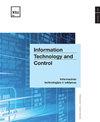UPSNet:不知道下游任务的通用点云采样网络
IF 2
4区 计算机科学
Q3 AUTOMATION & CONTROL SYSTEMS
引用次数: 0
摘要
随着三维传感技术的发展,点云的数据量迅速增长。因此,在基于学习的点云处理中,为了节省内存空间,降低分类、分割、重构等下游处理任务的计算复杂度,通常会对点云进行提前下采样。显然,采样的点云必须具有良好的代表性,并保持原始点云的几何结构,以便下游任务能够在原始点云采样的基础上获得满意的性能。传统的点云采样方法,如最远点采样和随机采样,主要是启发式地选择原始点云的一个子集。然而,它们没有充分利用点云的高级语义表示,对离群值很敏感。其他一些抽样方法是面向任务的。本文提出了一种不知道下游任务的通用点云采样网络(简称UPSNet)。它由三个模块组成。重要性学习模块负责学习输入点云中各点之间的互信息,计算一组变分重要性概率来表示输入点云中各点的重要性,并在此基础上设计掩码,丢弃重要性较低的点,从而控制剩余点的数量。然后,区域学习模块从输入点云中学习得到每个区域的高维空间嵌入,并通过变分重要概率对高维空间嵌入进行加权得到每个区域的全局特征。最后,通过坐标回归模块,对全局特征和各区域的高维空间嵌入进行级联学习,得到采样点云。对采用不同点云采样方法采样的重构点云进行了点云分类、分割、重构和检索等一系列实验。实验结果表明,提出的UPSNet可以为分类、分割、重构和检索等下游任务提供更合理的输入点云采样结果,优于现有的不知道下游任务的采样方法。所提出的UPSNet不面向特定的下游任务,因此具有广泛的适用性。本文章由计算机程序翻译,如有差异,请以英文原文为准。
UPSNet: Universal Point Cloud Sampling Network Without Knowing Downstream Tasks
With the development of three-dimensional sensing technology, the data volume of point cloud grows rapidly. Therefore, point cloud is usually down-sampled in advance so as to save memory space and reduce the computational complexity for its downstream processing tasks such as classification, segmentation, reconstruction in learning based point cloud processing. Obviously, the sampled point clouds should be well representative and maintain the geometric structure of the original point clouds so that the downstream tasks can achieve satisfied performance based on the point clouds sampled from the original ones. Traditional point cloud sampling methods such as farthest point sampling and random sampling mainly heuristically select a subset of the original point cloud. However, they do not make full use of high-level semantic representation of point clouds, are sensitive to outliers. Some of other sampling methods are task oriented. In this paper, a Universal Point cloud Sampling Network without knowing downstream tasks (denoted as UPSNet) is proposed. It consists of three modules. The importance learning module is responsible for learning the mutual information between the points of input point cloud and calculating a group of variational importance probabilities to represent the importance of each point in the input point cloud, based on which a mask is designed to discard the points with lower importance so that the number of remaining points is controlled. Then, the regional learning module learns from the input point cloud to get the high dimensional space embedding of each region, and the global feature of each region are obtained by weighting the high dimensional space embedding with the variational importance probability. Finally, through the coordinate regression module, the global feature and the high dimensional space embedding of each region are cascaded for learning to obtain the sampled point cloud. A series of experiments are implemented in which the point cloud classification, segmentation, reconstruction and retrieval are performed on the reconstructed point clouds sampled with different point cloud sampling methods. The experimental results show that the proposed UPSNet can provide more reasonable sampling result of the input point cloud for the downstream tasks of classification, segmentation, reconstruction and retrieval, and is superior to the existing sampling methods without knowing the downstream tasks. The proposed UPSNet is not oriented to specific downstream tasks, so it has wide applicability.
求助全文
通过发布文献求助,成功后即可免费获取论文全文。
去求助
来源期刊

Information Technology and Control
工程技术-计算机:人工智能
CiteScore
2.70
自引率
9.10%
发文量
36
审稿时长
12 months
期刊介绍:
Periodical journal covers a wide field of computer science and control systems related problems including:
-Software and hardware engineering;
-Management systems engineering;
-Information systems and databases;
-Embedded systems;
-Physical systems modelling and application;
-Computer networks and cloud computing;
-Data visualization;
-Human-computer interface;
-Computer graphics, visual analytics, and multimedia systems.
 求助内容:
求助内容: 应助结果提醒方式:
应助结果提醒方式:


